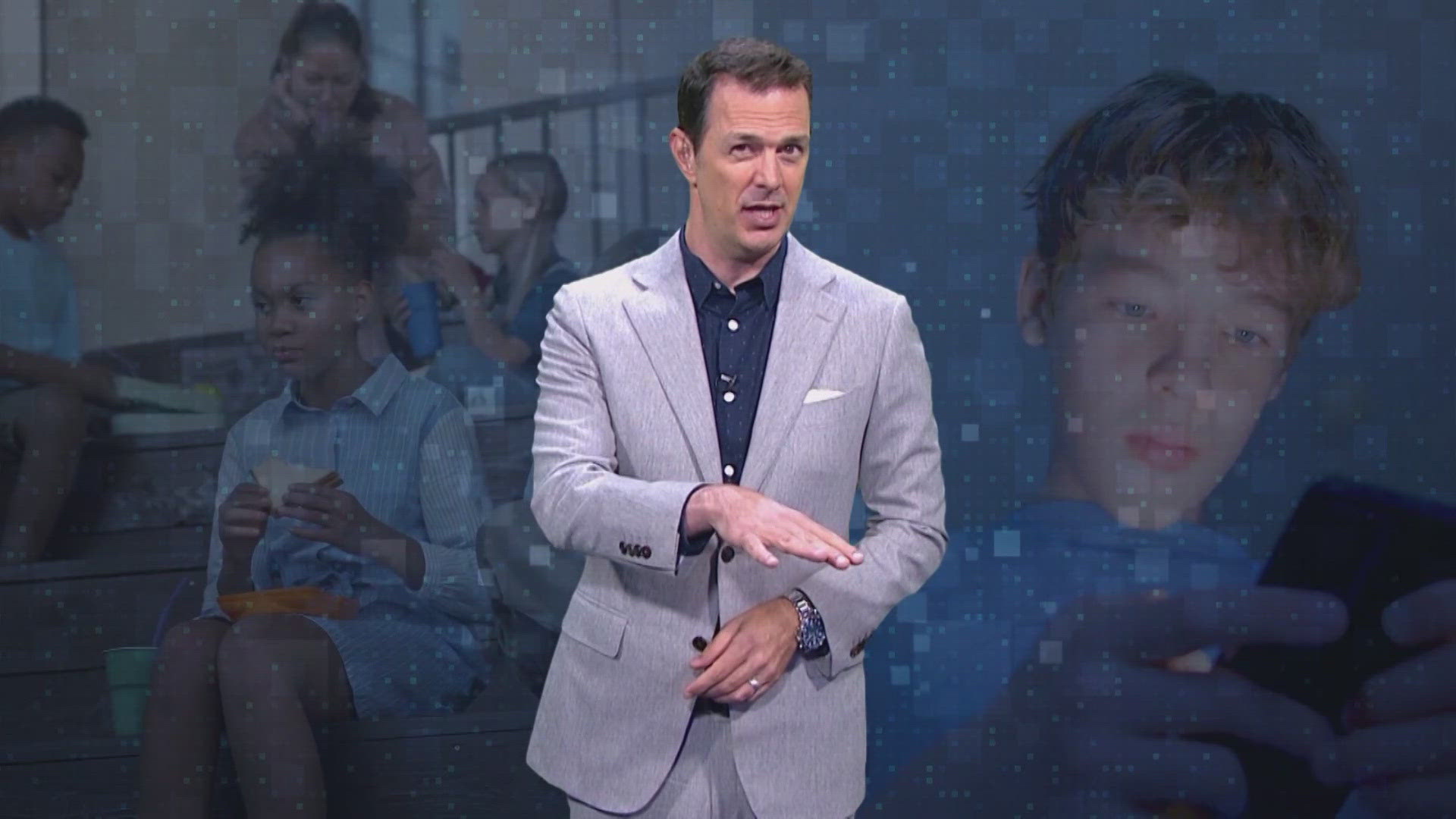In response, school districts across the country are considering some form of phone bans. Here in North Texas, Richardson ISD has banned phones during school, using secure pouches to keep phones locked away, with severe penalties for their use before the end of the day. Grapevine-Colleyville ISD took a different approach, allowing them for some students in between class and during lunch.
Proponents say these decisions are long overdue. In his New York Times Bestseller, “The Anxious Generation,” NYU Professor and social psychologist argues that smartphones in class present a host of problems, including reduced test scores, mental health issues, excessive distractions, cyberbullying, and more. His suggestion is that school districts consider outright bans on use of devices during school hours.
Jamie Nunez, with Common Sense Media, points at the economics of the digital landscape. “It’s very clear that devices and apps go out of their way through their business models to hold attention of kids and we need to put a stop to that,” he says.
Common Sense’s research backs that up, finding that students with a smartphone use them for a median of 43 minutes per day while at school. That’s a substantial percentage of precious learning time, spent on a device. And when you consider that Pew Research found that 95% of teens own or have access to a smartphone, it’s a potential distraction for nearly every student.
Simply putting them away in a backpack might seem like one solution. But brain experts say even when the phone is out of sight, the distraction persists.
“Even if we’re not consciously thinking about our phone when it’s there, at some level our brain is having to work not to think about it,” says Dr. Lori Cook of the Brain Performance Institute in Dallas. “That’s worth considering in the classroom context as well.
Research says those interruptions can be profound, taking a student up to 20 minutes to get back on task afterward. Which perhaps played a role in 91% of Grand Prairie ISD teachers in a recent survey saying phones present classroom management issues. 95% of those teachers said phones contributed to disciplinary and safety issues on campus as well.
Richardson ISD conducted a similar survey, and Superintendent Tabitha Branum said the teacher comments were telling.
“Teacher after teacher left comments around the battle they’re having with kids and cell phones,” Branum said. “How distracting they are in classrooms.”
The increasing amount of screen time is evidence of just how essential phones have become to today’s younger generations. Their entire social world – in a device. And parents have grown accustomed to having 24/7 access to their kids, being able to communicate even when they’re in the middle of class. So are bans the answer? That’s what Richardson ISD wanted to find out when they launched a trial program at one of their campuses in 2022. Phones would go into a pouch at the start of the school day, not to be removed until the end of the day, except in cases of emergency.
The results spoke for themselves.
“It was so overwhelmingly successful that we added three more junior highs and a high school,” says Branum. “When I talk individually to students, they will all share the benefits. They will all say why it has been a good thing for their learning.”
While it’s too soon to see an impact on grades or test scores, Branum cited a 40% reduction in disciplinary issues. And up to 40 minutes of recapture teaching time over the course of a school day. Combined, that adds up to roughly two extra weeks of class time each school year. That’s time kids spend learning and not on Snapchat.
Branum adds that the benefits aren’t only educational. She says Richardson is seeing less evidence of cyberbullying and more engagement between students in the hallways and at lunch time. More talking, less texting.
While Branum says most parents have been supportive, there has been some surprising pushback from parents. Many cite concerns over their kids having a phone in case of a drastic emergency like a school shooting.
New York Times Columnist, author and parent Pamela Paul says she’s heard the fears expressed by other parents before.
“Well how will I get in touch with my child during the day? It is that great unknown, ‘I don’t know where my kid is,’ that is the hardest thing for a parent,” she says.
But safety experts push back, saying phones can actually distract students in those moments, when they should be focused on safety and not their cell.
For Paul, that serves as a timely reminder of the need to prioritize the child’s educational wellbeing over the perceived need that a student have a cellphone handy at all times.
“This is where we tend to confuse a parent's need with a child's need,” she says. “The benefits that we ascribe to a child having a smartphone are really benefits to us.”
Fewer distractions, more instruction time, and less cyberbullying? With more and more districts across the country singing the praises of going phone free, is this trend here to stay? At least for Richardson ISD, when it comes to phones in schools their leadership seems happy to say, “so long.”
“Now I recognize it does mean sacrifices for students and parents,” Branum says. “But I believe the benefits far outweigh the sacrifices. The mental wellness of our kids matters far now more than ever.”

